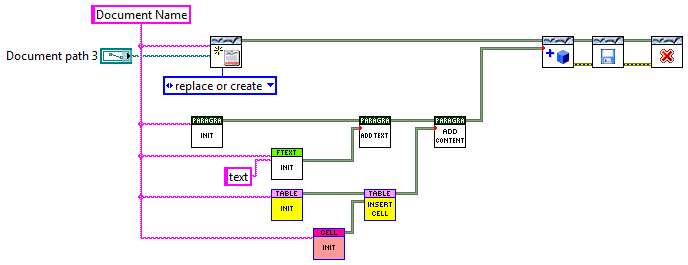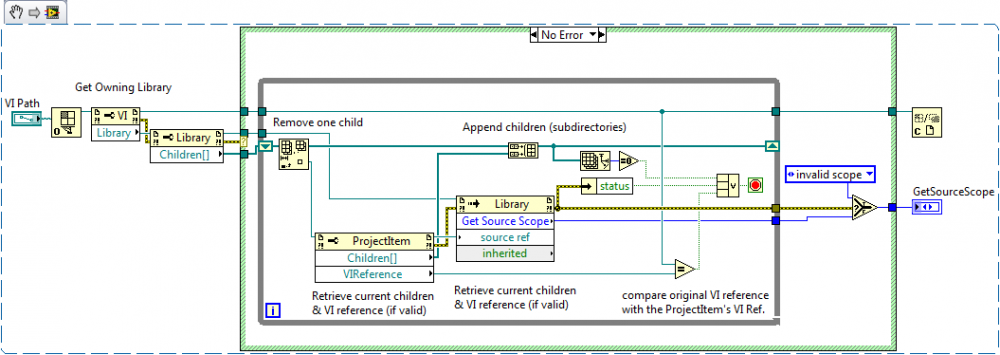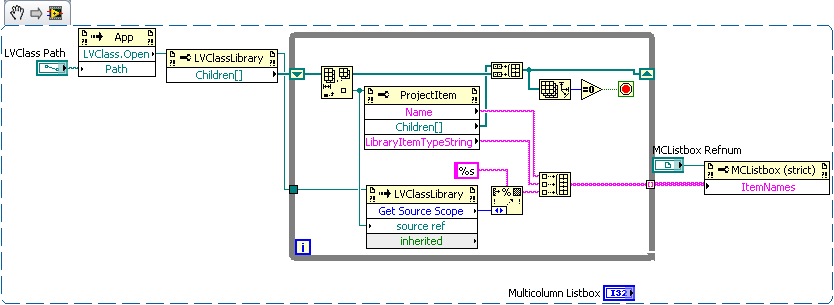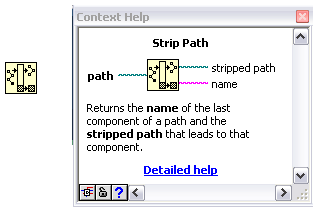-
Posts
1,213 -
Joined
-
Last visited
-
Days Won
49
Content Type
Profiles
Forums
Downloads
Gallery
Everything posted by Francois Normandin
-

Can we control electron/charge float in the air
Francois Normandin replied to superhero's topic in LAVA Lounge
Yes. It's essentially what Millikan demonstrated when he calculated the elementary electronic charge. See Millikan Oil-drop experiment.Well, it all depends what you mean by "lots of charges"... If your goal is to control it in 3D, then you'd need a 3-dimensional electric field gradient controller. Are you trying to lift yourself from the ground like a superhero? Wait, I assume you already know how to do that... -
Hi LAVAs, I already picked the curiosity of some of you guys with this Open Office Report Generation toolkit. So here is a snapshot of what's gonna be made accessible shortly through the Code Rep. But most importantly, I'd like to know what would be useful for the community. I'm having a design decision to make at the moment and I want to get people's opinions. The toolkit will be based on AODL, a .NET API for Open Document Format. It's still in beta (v1.3) and includes only Text Documents and Spreadsheets, but it's a complete interface. It's a complicated API, but after spendig a few days poking around it, it's a quite simple mechanics. I'm building this toolkit with LVOOP. For the moment, the "Basic" palette is taking form: * Init Document * List Styles * Add Text * Add Table * Add Table of Content * Add Image * Save * Load * Dispose() To be used somehow like this: That's fairly straightforward. Where it gets a little more complicated is that I'd like to propose a true API to extract one part of a document and modify it. For that, each token that is constructed (Content of document) needs to be done by first creating the empty construct with the document reference as input. I haven't found a way yet to create content without first assigning a document reference. (i.e. I would like to find a way to create it with an empty reference and change that reference later on when I decide which document I want to add this content to.) This constraint quickly adds a bad feel to the whole exercise... What a spaghetti! So I might solve this problem by creating an active directory a FGV of current documents references (provided there are many) and each new content class (i.e. Create Empty Table) would be provided a Document Name to search the reference in the directory. This allow addition or modification of content in a State Machine. I can see why some people would not like this idea because it clearly breaks dataflow... but since the .NET API is by-reference, perhaps it's an acceptable compromise. The final toolkit would include some Advanced palette to edit, insert before/after, include content inside other structures recursively, and the like. My initial tests with LVOOP indicate this could be quite versatile and expandable as the AODL (An Open Document Library) is extended. Any thoughts on this? I'd like to hear your design advices as well as any requested features for the first draft. PS: BTW, this AODL API is great. You can create reports without OpenOffice being istalled on the machine! I still haven't looked at the "Save as DOC file" yet, but it shows promises.
-
That makes me remember this old joke: "If your car stops working and you don't know why, try shutting down the *Windows* and opening them again before you call the garage."
-
confirmed with Firefox 3.5
-
Which version of VISA drivers are you using at the moment? Have you tried to reinstall the latest drivers? (v4.6 Run Time or Full)
-
So you're not seeing at least the COM ports... Apart from VISA class, I'm sorry to say I'm at a lost of an explanation.
-
There should be a Menu Button that you can show/hide with a right-click (select Visible Items). The drop-down list will then display all available VISA resources. (Or it could be that your VISA class is not set for Instruments.)
-
Indeed. A VI by itself doesn't have a scope. You can disconnect a VI from its library and it's gonna be a plain ol' VI. This can be useful to remember if you've got a corrupted library. It never happened to me in a lvclass, but it did (in 8.2 if I'm not mistaken) for lvlibs. I had to disconnect the VIs from their corrupted library, otherwise I couldn't access it. Deleting the library file is not enough because the VI knows it is linked to it.
-

Why no scientist in ploitics?
Francois Normandin replied to Grampa_of_Oliva_n_Eden's topic in LAVA Lounge
Makes sense. You get greater public rewards if you're a politician then a scientist... -
Hi Mark, You can do it even if the class is not loaded. If your VI is not part of a library (lvclass, lvlib, xcontrol, ...) then it's scope will be "invalid". Otherwise, it's about the same thing except you start from the VI reference and check it's owning library reference. If it exists, then it's part of a library for which you can find a match by using the ProjectItem's VI reference. The VI reference is not always valid (because all library members are not automatically VIs) but if you can sort out the errors and invalid references, then you can match the correct ProjectItem with it's associated VI reference. Note that this works for any libraries, not just lvclasses. If your VI is a private member of a lvlib, then it's gonna return the correct access scope too. AccessScopeFromVI.vi
-
The children of a LVClass library are Project Items. Sorry I don't have 8.6 available at the moment. Here's a screenshot (LV2009 snippet). I was being lousy... there's another computer right next to me with LV 8.6... AccessScope_LV86.vi
-
Indeed, I tried to find an "emperor" emoticon, but could only find Darth Vader... Sorry Ben for the confusion. I was attempting humor with a second degree between NI & LAVA but it wasn't meant to be a rebuke. (There wouldn't be light without darkness)
-
Those are symptoms from the dark side...
-
You will have to create a reference constant and then drop the constant in the cluster. Right-click on your reference to create a constant from it, drag it to the cluster and then wire your reference to a "bundle cluster" primitive.
-

Missing Download Links (LAVA 1.0)
Francois Normandin replied to Francois Normandin's topic in Site Feedback & Support
That's probably it. I'll pass the info to my colleague. thanks -

Why no scientist in ploitics?
Francois Normandin replied to Grampa_of_Oliva_n_Eden's topic in LAVA Lounge
How I envy that... our current Science minister (Canada) is a creationist. (Not that I really care what he personally believes, but he could have respectfully asked the prime minister for another job in his governement...) -

Why no scientist in ploitics?
Francois Normandin replied to Grampa_of_Oliva_n_Eden's topic in LAVA Lounge
Chancellor Angela Merkel (Germany) was a quantum physicist before going into politics. Well, quantum politicians are not liars... they always say the truth, but only if the wavefunction is not collapsed. Who knows if it's not happening in the 5th or 6th dimension? -
This thread refers to a library of VIs that is still missing from the big crash. If there's a chance they weren't completely lost, I'd be interested to have a look. thanks,
-
Ask Alfa's code... BTW, I don't know if you should be allowed to customize one more thing on this forum... That could be nasty!
-
Then may I suggest that it`d be moved in the "Code In-development" forum so we don`t lose track. Edit: Thanks Ô LAVA supreme mastermind.
-
I think it's around 1000 that you can do that. But keep it up and you'll be able to do it next week...
-

Strip Path on network path can crash LV
Francois Normandin replied to Francois Normandin's topic in LabVIEW Bugs
That's what I meant. We do that all the time. I think this is right (as Rolf pointed out), and this is exactly what is returned by the function. I would settle for LabVIEW not crashing and a note in the help that would clarify this behavior. It's most probably not unexpected behavior based on what I've read in this thread, but when the help states "returns the last component of a path", for me it means that \\server\dir should be strippable. Thanks. -

Strip Path on network path can crash LV
Francois Normandin replied to Francois Normandin's topic in LabVIEW Bugs
What if you want to strip a path that doesn't exist because it's gonna be a directory that will be created later? I think in this scenario, I want the strip path to work as a string parser. Now I understand that different OS have different ways of writing down a filepath and that's what I'd expect the Strip Path primitive to do, while strings are strings on any OS. -

Control edition - Which image editor do you use?
Francois Normandin replied to Francois Normandin's topic in User Interface
Actually, it's all about creating new images to add to the controls. XControls or not, there is no way to programmatically do it at the moment. -

Strip Path on network path can crash LV
Francois Normandin replied to Francois Normandin's topic in LabVIEW Bugs
I see your point. But I actually thought that it didn't matter if the path was valid or not, i.e. if I put a fake address, it should strip path anyway. I would expect this primitive to be nothing more than a <Search for "\" character and Split accordingly>-type of function. Whether it's "C:\dir" or "\\server\dir" shouldn't make a difference. If the primitive does something else than what I thought it would be doing, then yes, I'm the one with the problem.









